During the three week crossing from Galapagos to Marquesas we, (i.e. my Dad), had time to plan our route through the Pacific and at which islands we’d have time to stop. Unfortunately, because of our long delay in Panama and our deadline to be in Fiji at 1 October, we only had about 3 months for the myriad of islands scattered throughout the Pacific. And due to the immense size of the Pacific, one month of that time would be spent in just getting from one island to the other.
This frustrated my Dad especially. He hadn’t wanted to stay that long in Panama and also there hadn’t been too much to do there tourist-wise. The rest of us didn’t feel quite so sad about this prolonged stay (I didn’t, anyway.) Most of our time in Panama was spent at Shelter Bay Marina and it is situated in the middle of an army/naval nature reserve – acres of ground covered in beautiful rainforest right on our doorstep : D (metaphorically of course, because boats don’t actually have doorsteps).
And … lots of rainforest equals lots of birds. ; )
The first week at the marina we were still figuring out how everything worked and were becoming familiar with our new surroundings. Marike started doing yoga stretches in the morning and I joined her once or twice, but then I went on a walk with my Dad and we met some other yachties who were bird watching. . .bottom line: yoga lost me forever! There were a few of us who would leave the marina at about 7, and then just wander down a path that leads deeper into the forest. We never got very far, though. After an hour and a half’s birdwatching, I could get back to the boat in less than 5 minutes ; D. It’s just because there were so many different birds to see! In the three months we were in Panama I saw about 120 species of birds, almost all just in the small area of Shelter Bay Marina.
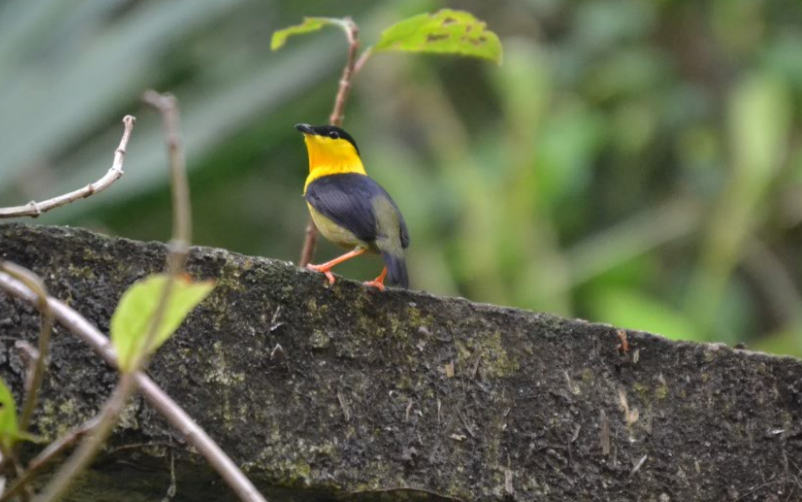
The male Golden-collared Manakin (Manacus vitellinus). I was really happy to get this wonderful clear shot of this densbush-loving little bird : )
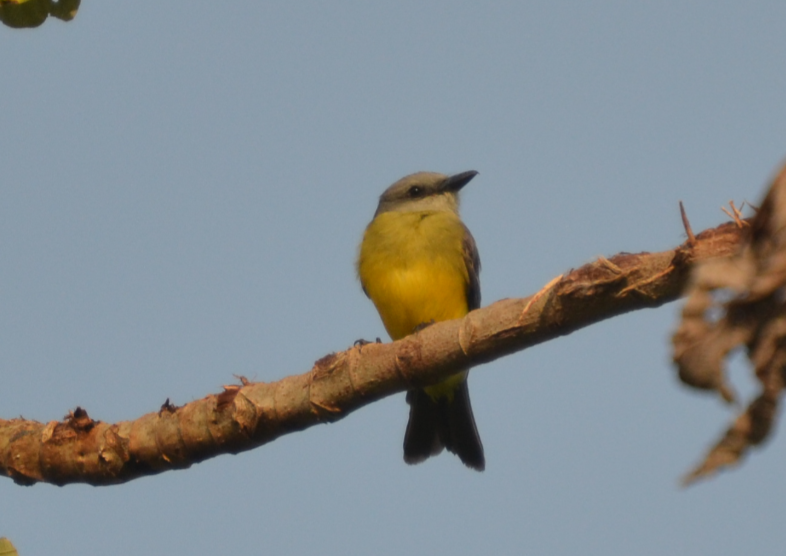
A Tropical Kingbird (Tyrannus melancholicus). I just had to include a picture of one, since they are one of the birds mostly commonly and easily seen. Because they catch insects they often sit quietly on open perches and then (seemingly totally random) fly a short, erratic dance and then calmly return to their perch as if nothing happened.
My absolute favourite bird was the Spotted Sandpiper (Actitis macularius) that hung out close to the cruisers’ veranda. These are adorable little birds: they have grey backs and long, light yellow legs. Underneath they are snow white and completely bereft of any spots except during the breeding season. As they walk their tail is constantly bobbing up and down and this is joined by an irregular head bob here and there. I often saw it alone when it was hunting on the grass for insects. The bird’s tail would bob-bob-bob until it spotted a potential meal, then it suddenly went completely still and slowly moved closer step-by-step with its head down, ready to strike. It only takes a split-second longer for the bird to quickly grab its prey and then to resume its tail bobbing as if nothing at all had happened.
One of the bird-watchers had a hummingbird feeder which we set up in a quiet corner of our daily path. We were actually quite pleased by how many visitors came to it – they’re just very hard to photograph!
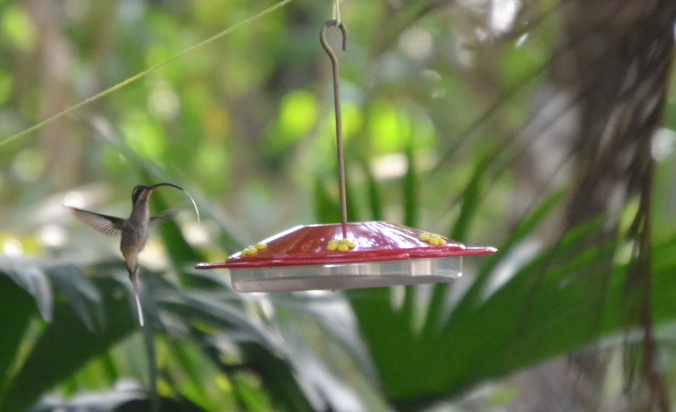
A Long-billed Hermit (Phaethornis longirostris). I am extremely pleased with this photo. These Hermits (don’t worry, I’m also not exactly sure why they’re not called Hummingbirds) fly in little time-travel jerks. When they’re actually moving they move too fast for me to see them – all I hear is wirring wings. But then they hang in the air for split seconds in which they are hovering in exactly the same spot and you can see them clearly. Another reason I really like this photo is because you can see the Hermits tongue. Yip, the bird’s beak is black and the rest of that curve is its tongue. Cool fact: only pidgeons and patridges can suck, every other bird species need to tilt their heads back in order to swallow liquid -or they need to lap it up with their tongues : )
In the end it worked out that I was the one that had to keep the feeder filled, as my boat was the only one stocked with white sugar needed for the sugar water. It has to be white sugar because brown sugar isn’t as good for the hummingbirds and artificial sweeteners gives them no nutrition and may cause sores in their mouths. I liked having the job of feeder-filler : ). Whenever I went to replace the old sugar water I took three plastic bottles with me: one with soapy water to clean the feeder, one with normal water to rinse it out and then the sugar water itself. Getting the water in the feeder was slightly tricky, because the rope loop it was hung on was just slightly too high for me. Getting the feeder down wasn’t a problem (as such), but hanging the full feeder back up while balancing on my tipitoes without tilting it (and thus making the feeder and myself quite sticky with sugar water), was quite a different matter. The one time I managed to do it without spilling anything was when I got Marike to do it for me. ; P
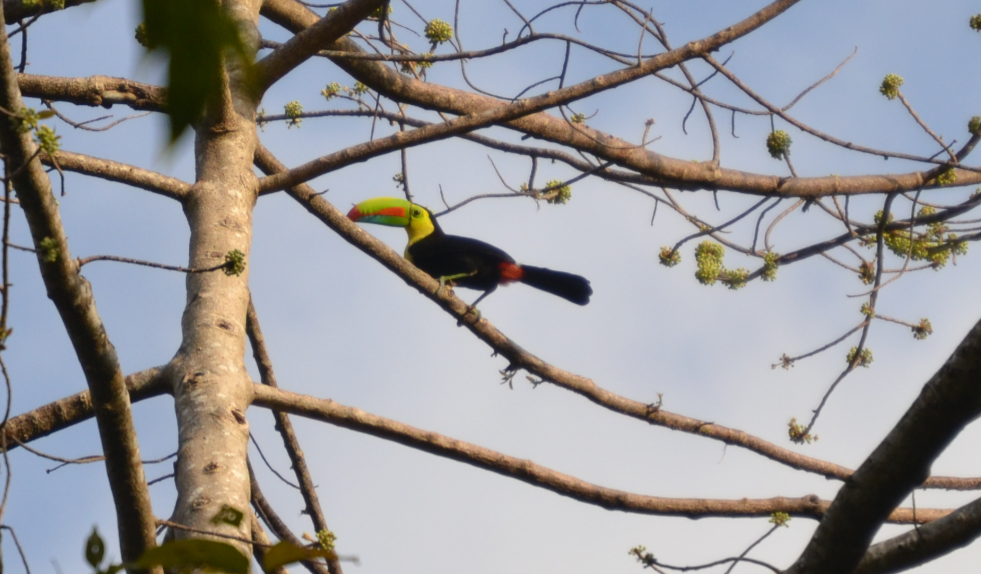
Keel-billed Toucan (Ramphastos sulfuratus). If you aren’t looking for them, the chances that you’ll see a toucan is remote, because they love the tops of the trees. Just keep watching a tree with any kind of fruit – a toucan is bound to show up.
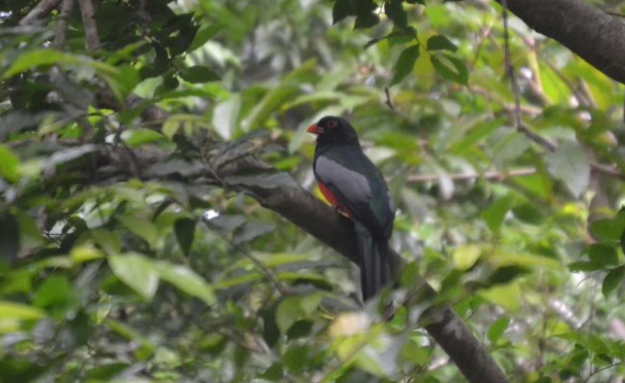
A male Slaty-tailed Trogon (Trogon massena). These birds are actually quite big, but very easy to miss since they are well camoflauged and hardly ever move. When this particular tree was fruiting we (the bird watchers) could always count on some kind of Trogon sitting in its branches.
But there weren’t just birds in the rainforest. There were also capuchins, howler monkeys (to be heard every other day), butterflies (which were very bountiful) and sloths. Panamá apparently means ‘an abundance of butterflies’ in a native language).
Yes, Sloths! = D. We were all excited when we heard that seeing a real, live, wild sloth was actually a possibility. It took a while, though, before we saw our first sloth. When they’re curled up sleeping (which is most of the time) they look like big balls of algae growing in the trees! The first one we saw was while we were on a family outing in the reserve and it was actually quite close to the road : ). In our exuberance we must have disturbed/scared it a bit, because it started running away – very, very, very slowly.
In the movie Zootopia they have sloths working in the government office, and this sloth moved and looked exactly like those in the movie (they are Three-toed sloths). During other nature walks we saw more sloths, also of the Two-toed kind. Because of their facial markings the Three-toed sloth looks happier and friendlier than the Two-toed sloth, so I like them the most : ).
The White-faced Capuchins always seemed to be high in the trees, and just watching all their antics gave me vertigo (shudder). They think nothing of jumping from one 15m tree to another 15m tree, or of playing wild, fast games there in the heights. I once saw a whole family launching themselves one by one into a palm tree 2 meters away and about 4 meters down (but still another 4 meters above the ground) and the landing place was a very unstable one, according to me. Vertigo is clearly something capuchins do not suffer from.
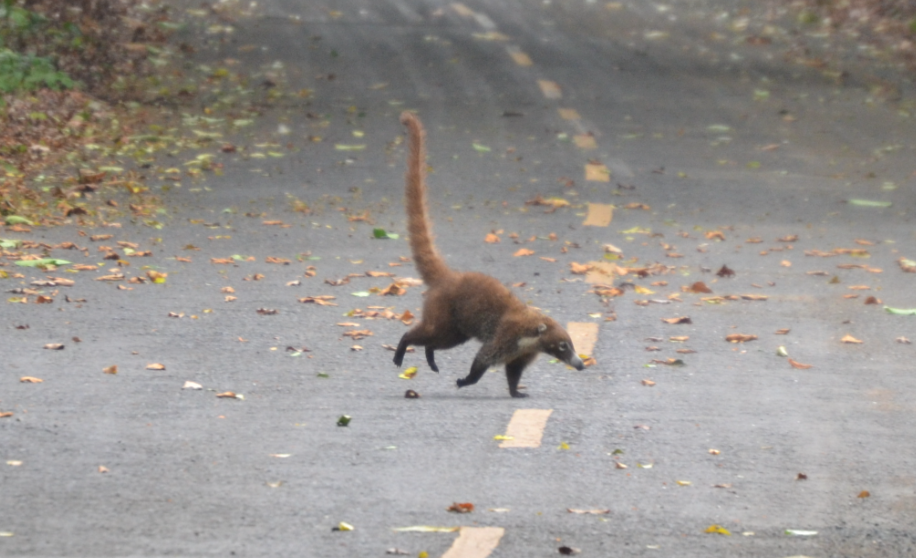
This is a Coati, another one of Central America’s exotic creatures. They’re usually in family groups, but the whole family never crosses the road at the same time. As soon as you think that the last Coati has finally crossed the road, a few more cross.
There were also a few old abandoned American buildings in the forest that we could walk to. In 1903 The U.S. government started negotiating with the Colombian government for permission to build the Panama Canal. But the Colombian government refused. So then the U.S. helped the local Panamanians gain independence and in return got the contract to build the canal. As part of the original canal building agreement the U.S. obtained the canal and a certain width of the land next to the canal as their permanent possession. However, after many protestations the canal in its entirety, as well as all the land, came under Panamanian ownership in 1999. Unfortunately, most of the American built buildings were stripped of anything useful and are now just standing as old, broken ghosts of what they once were.
Shelter Bay Marina has a few of these buildings, including an old theatre (turned into a sail loft), a small chapel, and then also an old prison and three ammunition batteries (built for defence of the canal in the World Wars) deeper into the forest. It was hard to think that these building hidden in the forest were clean and well-kept not so long ago – because now they have trees growing on the roofs and bats and lizards living in the corners.
Seeing one for the first time I could imagine I was discovering an old Inca temple ; P.
So that’s why I didn’t mind staying in Panama for so long. It was still a long wait though, and we were all happy when it was finally our turn to go through the canal. I wanted to write these things about Panama, but then family made the decision to move the blog on before I could add my piece (which is just as well, otherwise the blog, and all of you with it, would still be in Panama).

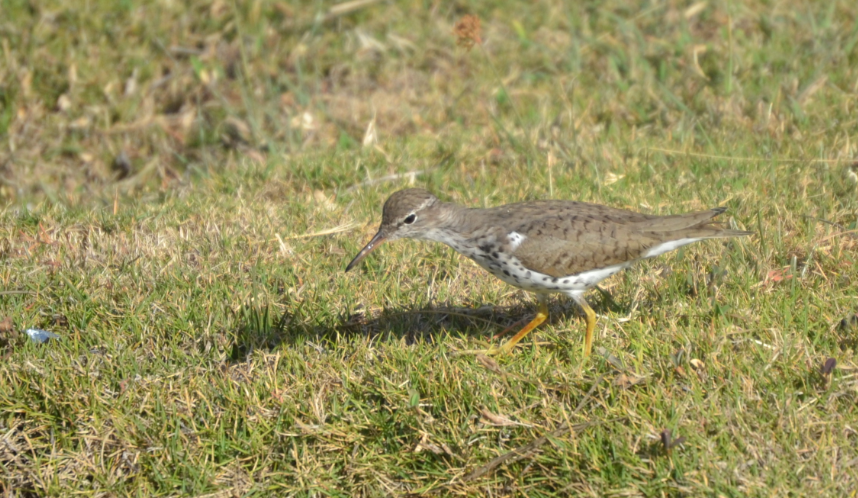
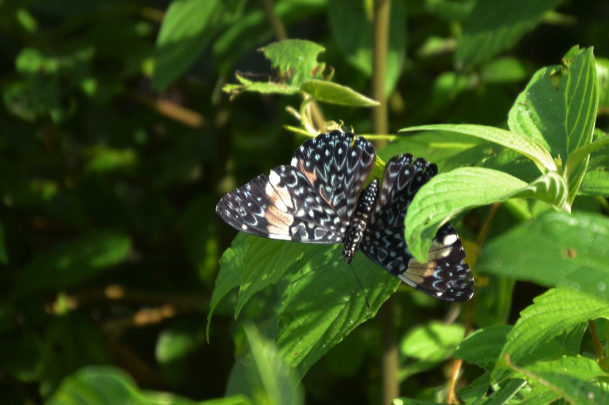
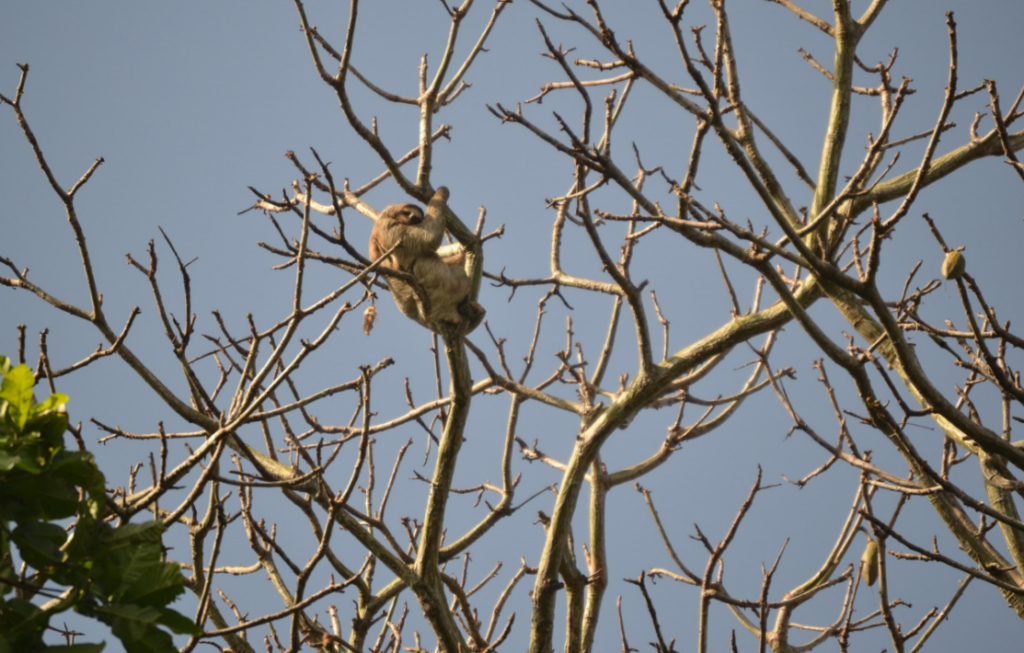
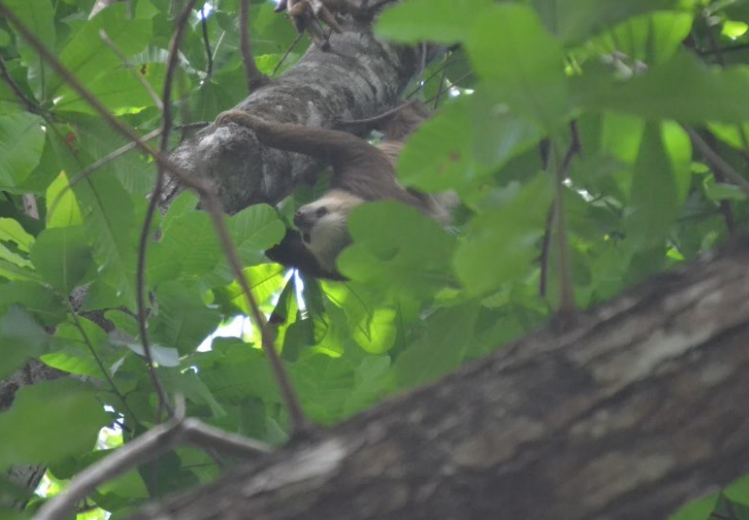
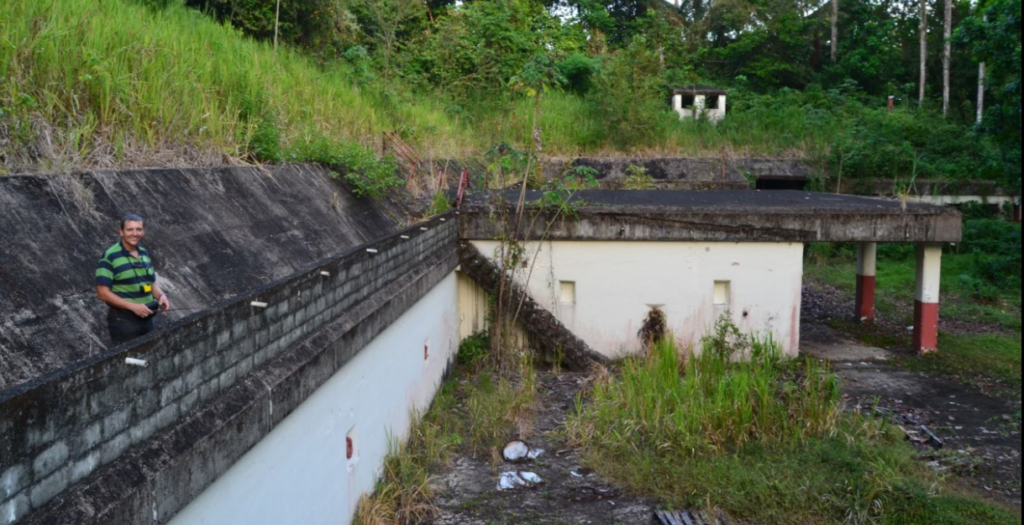
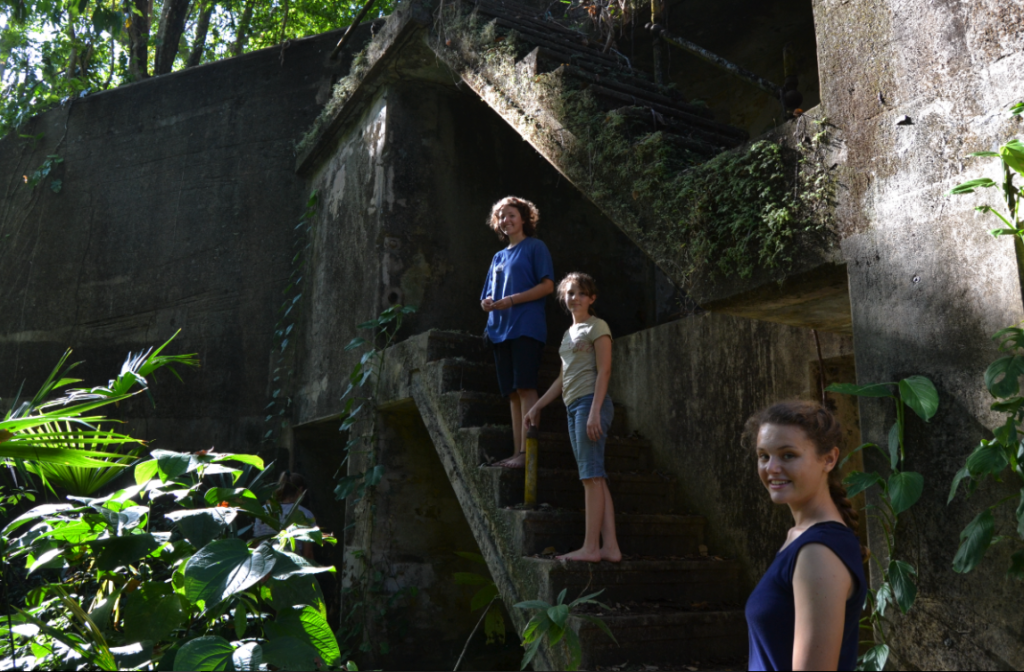
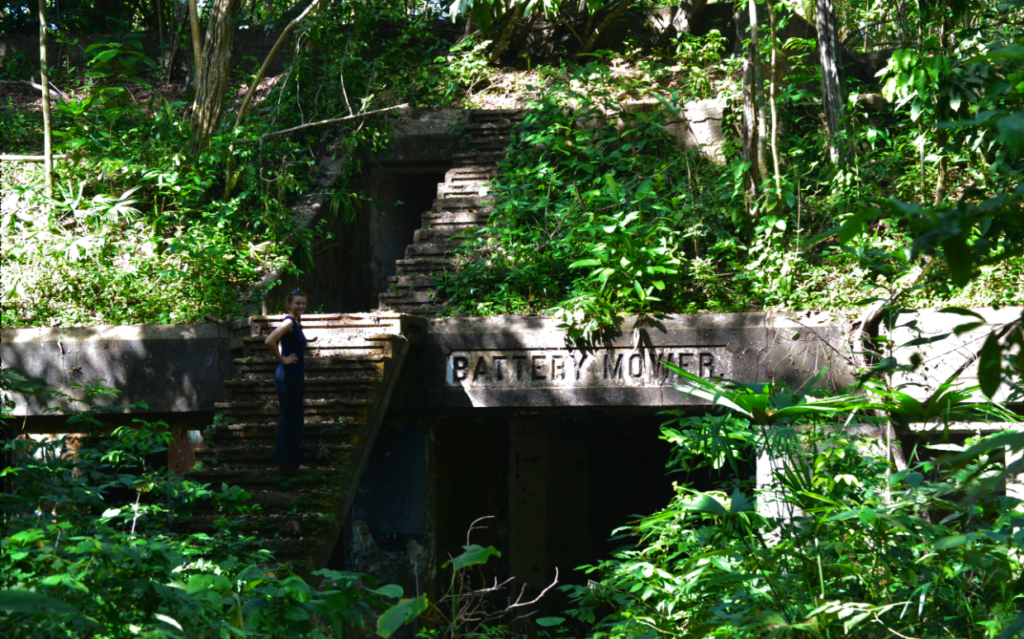
Recent Comments